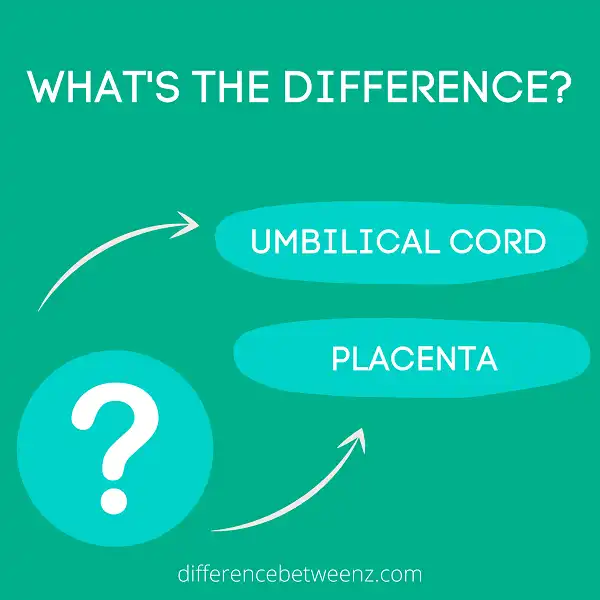Scientifically speaking, the umbilical cord is a conduit between the fetus and the placenta. The placenta is an organ that is unique to mammals and it surrounds the baby in the womb. It serves as the baby’s lungs, kidneys, and gastrointestinal tract while they are in utero. The placenta also provides oxygen and nutrients to the baby through the umbilical cord. Essentially, without both of these components, a baby would not be able to grow and develop in utero. So what is the difference between an umbilical cord and a placenta? Let’s take a closer look.
What is Umbilical Cord?
The umbilical cord is a thick, rope-like structure that connects the developing fetus to the placenta. It’s also known as the baby’s lifeline, as it carries oxygen- and nutrient-rich blood from the placenta to the fetus, and waste products from the fetus back to the placenta. The umbilical cord typically measures about 20 inches long and is composed of three blood vessels: two arteries and one vein. These vessels are surrounded by a thin layer of connective tissue called Wharton’s jelly. The umbilical cord develops during pregnancy and is typically clamped and cut shortly after childbirth. Umbilical cords can also be donated for stem cell research.
What is Placenta?
The placenta is an organ that develops during pregnancy to provide nutrients and oxygen to the growing baby. It is attached to the wall of the uterus and connects to the baby via the umbilical cord. The placenta also filters out waste products from the baby’s blood and helps to regulate hormone levels. During birth, the placenta is expelled from the body along with the umbilical cord. Placental tissue can also be used for medical purposes, such as creating skin grafts or treatments for certain diseases.
Difference between Umbilical Cord and Placenta
Umbilical Cord and Placenta Umbilical cord is a type of cable that connects the fetus to the placenta. It is also known as the navel string. The placenta is an organ that grows inside the uterus during pregnancy. It provides oxygen and nutrients to the fetus and removes waste products from the fetus. The umbilical cord is attached to the placenta and provides a link between the fetus and the placenta. The umbilical cord is made up of three blood vessels: two arteries and a vein. These blood vessels carry oxygen-rich blood from the placenta to the fetus and carbon dioxide-rich blood from the fetus to the placenta. The umbilical cord also contains a lot of Wharton’s jelly, which protects the blood vessels from being squashed. The average length of the umbilical cord is about 50-60 cm. The umbilical cord is clamped and cut at birth, which severs the connection between the fetus and the placenta. Afterbirth, the placenta is delivered through the vagina. Umbilical Cord and Placenta Umbilical cord is a type of cable that connects directly fetus to placenta.
Conclusion
The umbilical cord is the conduit between the mother and her baby. It is composed of three blood vessels: two arteries and one vein. The umbilical cord carries oxygenated blood from the placenta to the baby and carbon dioxide-laden blood back to the placenta. After birth, when the baby takes its first breath, signals are sent along the spinal cord that close off these veins so that no more blood flows between mother and child. This leaves only two umbilical arteries carrying nutrient-rich blood to the now-independent infant.


